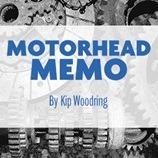A great deal more thought, effort and expense has been put into the understanding, care and feeding of Harley engines than chassis. Too bad. A basic knowledge of the motorcycle chassis is damn helpful and potentially able to make a rider look good, be good… be better… than a motor. Harley-Davidson hasn’t always been noted for expertise in the areas of tires, suspension, forks, swingarms… much of anything that accomplishes great deeds where the rubber meets the road… let alone frame design. Understandable really, since the Motor Company never much wanted to play in that end of the pool. Nonetheless, when it mattered, as it occasionally has over the years, they could manage… nicely! Example: the XR750 dominated dirt track racing since many of us were too young to spell “dominated!” This has been largely, speciously, attributed to the incredible engine, but in truth, more often than not, it has been tires, traction, shocks, forks, and frames… “tuned” to the task. Another instance, of less immediate interest, but mighty impactful all the same, were the designs of one Erik Buell… whether tubular or alloy, as implemented in Harleys or Buells. To belabor the obvious, it takes all the elements of cycle design, working in harmony to do justice to what any motor is capable of… in the end. But for our purpose here, we only have time and space for a simple primer in what amounts to the backbone of the package, the crux, the thing that ties it all together and makes all things possible… the friggin’ frame!

Motorcycle frames have several jobs. Foremost among them… and least obvious to neophytes… is keeping the wheels in line at all times and any direction of travel! Minimal flexing and bending are part and parcel of success in that endeavor, yet paradoxically, a touch of either can be beneficial, if controlled properly. In the early days, a lot of thought was borrowed from bicycles. As time, power and weight piled on… thinking shifted to doing as much as possible with triangles… or triangulation in the parlance. Tubes, as used for decades, have great strength in compression and torsion, but not so much when bending and flexing come into it. (Play with a soda straw for about two minutes… it becomes clear.) Meantime, some clever folks on other continents were discovering the benefits of using the engine as a stiffening member for the frame. One, in particular (Vincent), taking it so far as to eliminate pesky steel tubes altogether… bolting forks and rear suspension to the massive engine. There were other approaches to be sure, like Ariel (British) who pioneered stamped-steel, welded-together frame “halves” that suspended the engine from below, later adopted and adapted by Honda in its early offering and lingering on in small-bore stuff worldwide, to this day! The majority of manufacturers, on the other hand, stuck with a less scientific approach and just made frames beefier and heavier until the wheels kinda stuck to the same track… mostly, Harley being a major proponent of this “if it breaks or bends, make it bigger” school. Even so, lugs, forgings and tubes, brazed together, slowly gave way to all welded construction and ever-slicker use of sheet metal for “boxing in” stressed areas, which came to be the norm.

Engineering expertise took off in a bunch of directions once computing power came into play. A CAD/CAM biggie was the notion of running tubes or alloy castings directly from steering head to swingarm pivot, which took hold especially in sport bikes, said members straddling the engine rather than cradling it or curling over the top. How to build and what to do, with swingarms, suffered a great deal of experimentation as well. So, we arrive in the 21st century… and the beat goes on, evident in Harleyland, on the newest dressers, Softails, Sportsters and Street models… all of which have had “platform” revisions (new chassis—in the parlance) since then. All well and good and working to the degree you needn’t worry or even think about it. But how many of us, who can recite chapter and verse about the engines we’ve seen since 1903, mumble up our sleeves when it comes to a potted history of frames for same?

The ABCs of X’s and F’s and such
A full discourse on frames that are older than we are, or for archaic machines we’ve hardly seen, let alone ridden in person, isn’t possible this time around. (But I reserve the right to get around to it when and if.) Instead, I’m hoping a basic outline of more familiar stuff will ignite some interest in the matter… for future studies of your own. For now, we’ll start here:

X-engines
From 1952 to around 1972 the Ironhead Sportster was a model of interchangeability, in the sense that any engine from the period (including flathead K-models) could be mated to any frame from the same period. Neat! Things got a little more complex in 1973, largely because of the decision to use a simple steel seat support bracket on top of the seat post, rather than the trouble-free forging of previous years. Result: the first factory “recall”… which amounted to a couple of steel strap “reinforcements” to be welded on by the dealer! That frame lasted until 1979 when a considerably better design came to be. (Actually, the XLCR got it a few years earlier.) This frame did a better job of “wheel harmonizing” but gave way to a great frame in 1982. With minor revisions, the 1982–2003 frame was, and might still be, the best X-engine frame ever… light, tight and right… and a serious handler in the bargain. When H-D went all rubbery with Sportys in 2004, a completely new frame requirement came up. Chasing the handling standards of the solid-mount XLs meant the new one had to be super-stiff with no help from the isolated engine… so as good as it is… it’s notably heavier than perhaps is to be preferred. In short, we have four (and a fraction, if you count tweaks to each) designs used in the 60-year history of the inimitable X!

F-engines
Leaving Panheads out of it (for now), the Shovelhead showed up in 1966 wearing a frame and swing arm that were hardly state of the art, and anything but stiff in any plane, but worked OK for cruising with a load. Partly, this was because the frame “cage” had just been prodded and poked into holding an electric starter and a big battery while using a swing arm meant for 100-plus pounds less weight. Oh well! Nobody road raced a hog Big Twin back then anyway.

The swingarm got squared away (literally) by 1972, but the frame itself hung on (pardon the expression) to the end of Shovelhead production and with tweaks to accommodate the Evo motor… it was used until 1986! There are some “traps” in trying to swap these frames freely from engine to engine and year to year, but all the same… for four speeds… it was a hell of a run!



















